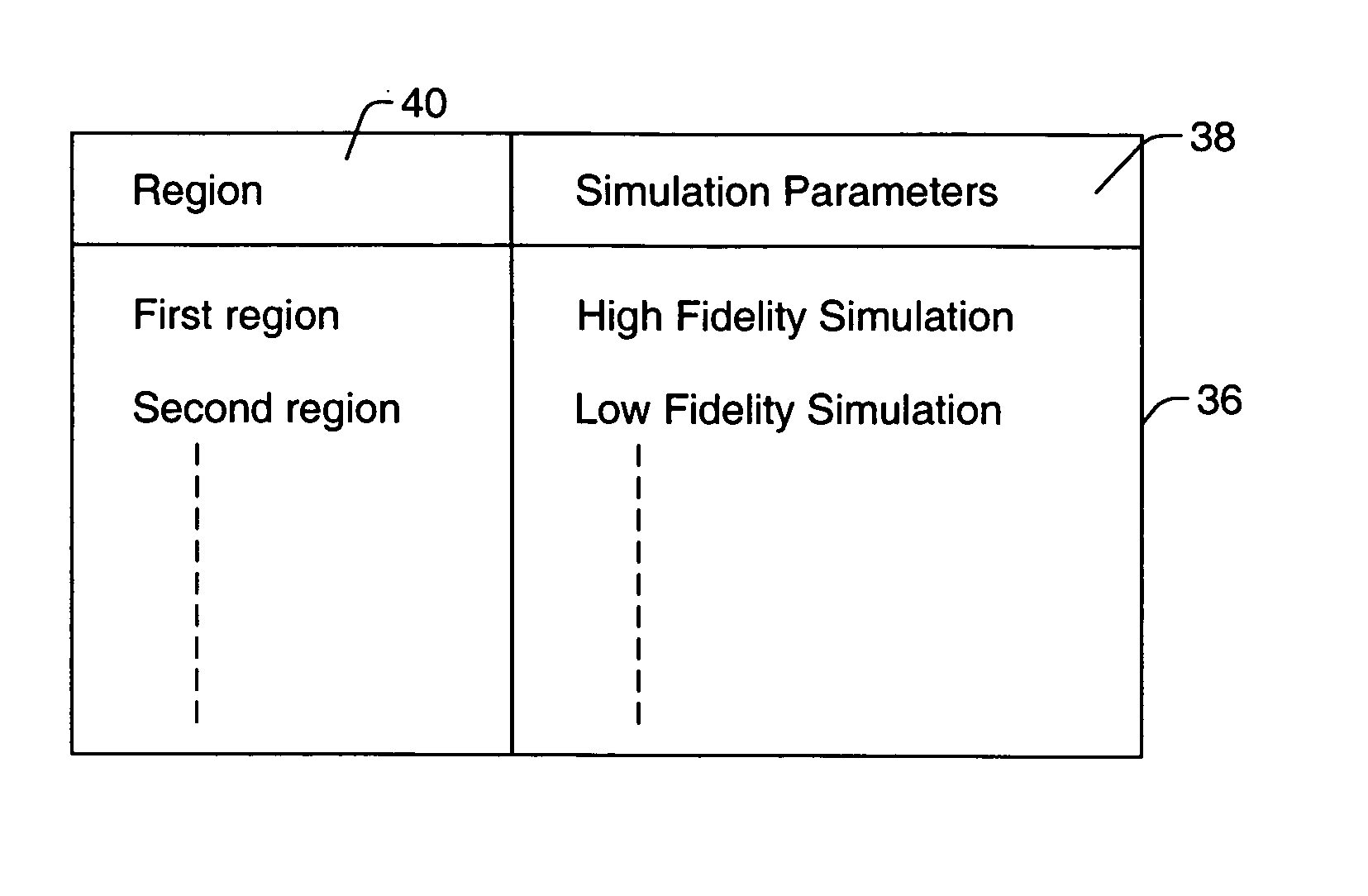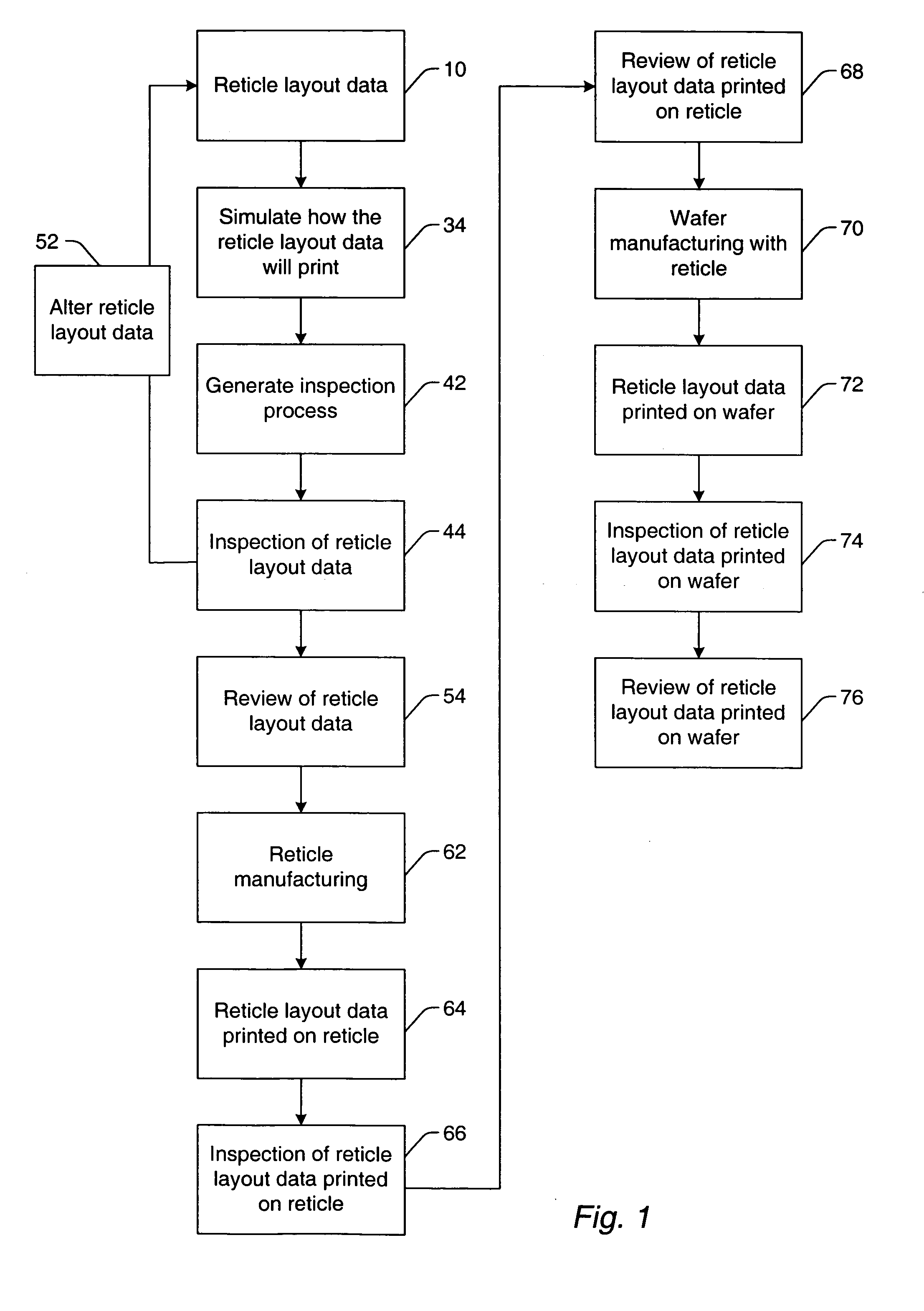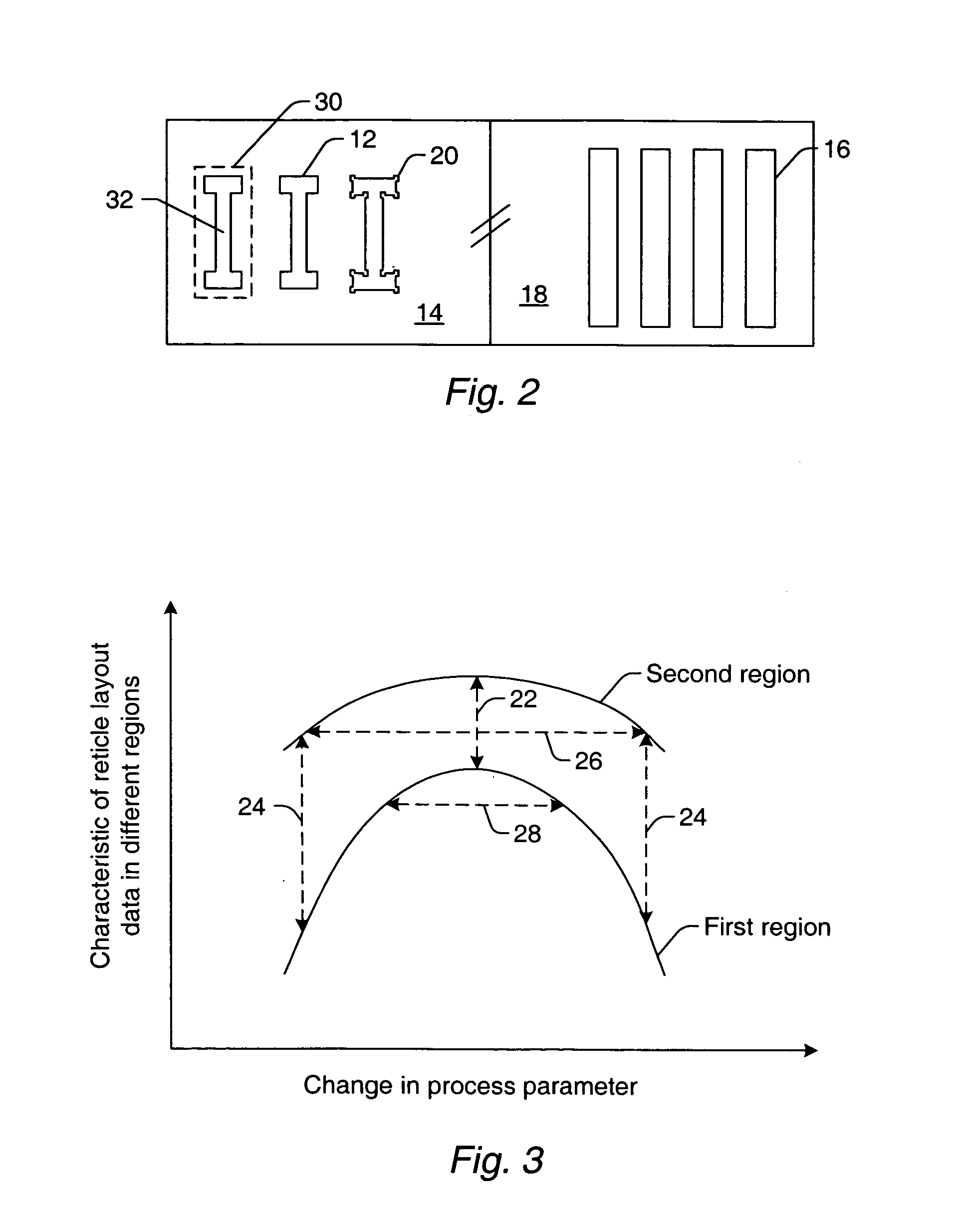Methods for simulating reticle layout data, inspecting reticle layout data, and generating a process for inspecting reticle layout data
a technology of layout data and computer implementation, which is applied in the field of computer implementation methods for simulating reticle layout data, and generating a process for inspecting reticle layout data. it can solve the problems of direct impact, increase in the complexity of the ic design, and increase in the design of the ics
- Summary
- Abstract
- Description
- Claims
- Application Information
AI Technical Summary
Benefits of technology
Problems solved by technology
Method used
Image
Examples
Embodiment Construction
[0040] The terms “reticle” and “mask” are used interchangeably herein. A reticle generally includes a transparent substrate such as glass, borosilicate glass, and fused silica having a layer of opaque material formed thereon. A reticle may include additional materials formed under the opaque material such as an adhesion layer. In addition, a reticle may include additional materials formed on top of the opaque material such as a bottom anti-reflective coating, a resist (or “photoresist”), and a top anti-reflective layer. The opaque regions may be replaced by regions etched into the transparent substrate.
[0041] Many different types of reticles are known in the art, and the term reticle as used herein is intended to encompass all types of reticles. For example, the term reticle refers to different types of reticles including, but not limited to, a clear-field reticle, a dark-field reticle, a binary reticle, a phase-shift mask (PSM), an alternating PSM, an attenuated or halftone PSM, a...
PUM
| Property | Measurement | Unit |
|---|---|---|
| area | aaaaa | aaaaa |
| circuit density | aaaaa | aaaaa |
| size | aaaaa | aaaaa |
Abstract
Description
Claims
Application Information
 Login to View More
Login to View More - R&D
- Intellectual Property
- Life Sciences
- Materials
- Tech Scout
- Unparalleled Data Quality
- Higher Quality Content
- 60% Fewer Hallucinations
Browse by: Latest US Patents, China's latest patents, Technical Efficacy Thesaurus, Application Domain, Technology Topic, Popular Technical Reports.
© 2025 PatSnap. All rights reserved.Legal|Privacy policy|Modern Slavery Act Transparency Statement|Sitemap|About US| Contact US: help@patsnap.com



